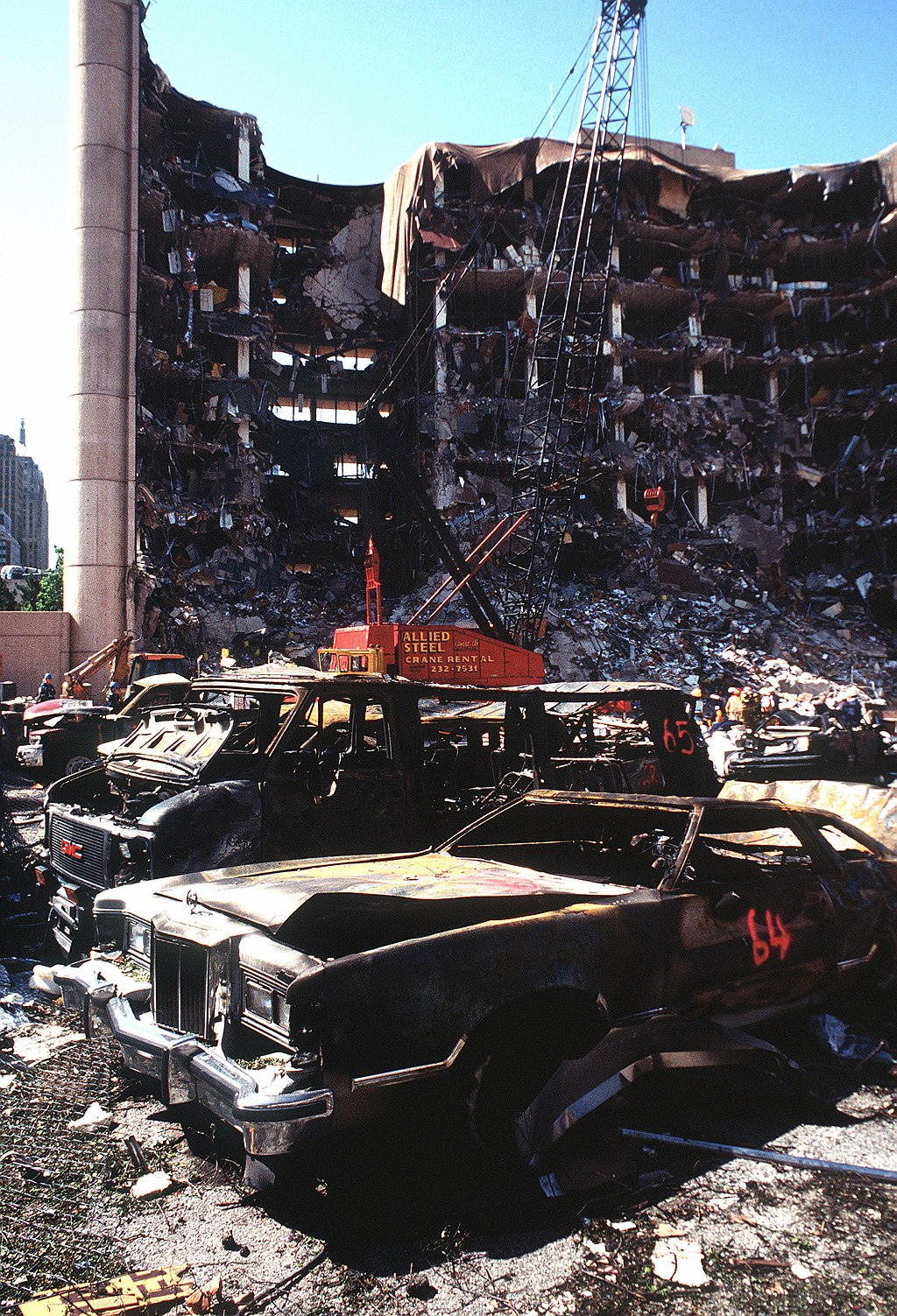By Saul Roth
The Oklahoma City bombing was a domestic terrorist attack on the Alfred P. Murrah Federal Building in Oklahoma City, Oklahoma, United States, on April 19, 1995. It was the deadliest act of terrorism on American soil until the September 11 attacks in 2001. The bombing killed 168 people, including 19 children under the age of six, and injured more than 680 others.
The bombing was carried out by Timothy McVeigh and Terry Nichols, two white supremacists who were angry about the government’s actions at Ruby Ridge and Waco. McVeigh and Nichols parked a Ryder rental truck filled with explosives outside the Murrah building and detonated it at 9:02 a.m. The blast leveled the building and destroyed or damaged dozens of other buildings in the area.
The bombing was immediately condemned by President Bill Clinton and other world leaders. In the days and weeks that followed, the bombing became a rallying cry for Americans to come together and show their support for the victims and their families.
The bombing also led to a renewed focus on domestic terrorism. In the years since the bombing, the U.S. government has taken steps to improve its ability to prevent and respond to acts of domestic terrorism.
The Oklahoma City bombing was a tragedy that claimed the lives of too many innocent people. However, it also showed the strength of the American people and their resilience in the face of adversity.
Background
The Oklahoma City bombing was the culmination of a number of factors, including the rise of the Patriot movement, the Ruby Ridge incident, and the Waco siege.
The Patriot movement is a loose collection of right-wing groups that believe that the federal government is conspiring to take away their rights. The movement gained popularity in the 1990s, as many Americans became disillusioned with the government following the Gulf War and the Los Angeles riots.
The Ruby Ridge incident occurred in 1992, when federal agents attempted to arrest Randy Weaver, a white separatist, on weapons charges. The standoff ended in a shootout that left Weaver’s wife and son dead.
The Waco siege occurred in 1993, when federal agents attempted to arrest David Koresh, the leader of a religious cult called the Branch Davidians. The standoff also ended in a shootout that left more than 70 people dead, including Koresh and his followers.
Bombing
On April 19, 1995, Timothy McVeigh and Terry Nichols parked a Ryder rental truck filled with explosives outside the Alfred P. Murrah Federal Building in Oklahoma City. The truck was loaded with 4,800 pounds of ammonium nitrate and nitromethane.
At 9:02 a.m., McVeigh detonated the bomb. The blast leveled the Murrah building and destroyed or damaged dozens of other buildings in the area.
The bombing killed 168 people, including 19 children under the age of six. More than 680 others were injured.
The Aftermath
The Oklahoma City bombing was immediately condemned by President Bill Clinton and other world leaders. In the days and weeks that followed, the bombing became a rallying cry for Americans to come together and show their support for the victims and their families.
The bombing also led to a renewed focus on domestic terrorism. In the years since the bombing, the U.S. government has taken steps to improve its ability to prevent and respond to acts of domestic terrorism.
The Trial
Timothy McVeigh was arraigned for the bombing. He was given a life sentence. He was executed on June 11, 2001.
Terry Nichols was also arrested and charged with the bombing. He was sentenced to life with no parole.
The Legacy
The Oklahoma City bombing was a tragedy that claimed the lives of too many innocent people. However, it also showed the strength of the American people and their resilience in the face of adversity.
The bombing led to a renewed focus on domestic terrorism and helped to improve the U.S. government’s ability to prevent and respond to acts of domestic terrorism.
The bombing also had a lasting impact on the people of Oklahoma City. The city has come a long way in the years since the bombing, but the memories of that day will never be forgotten.


Recent Comments